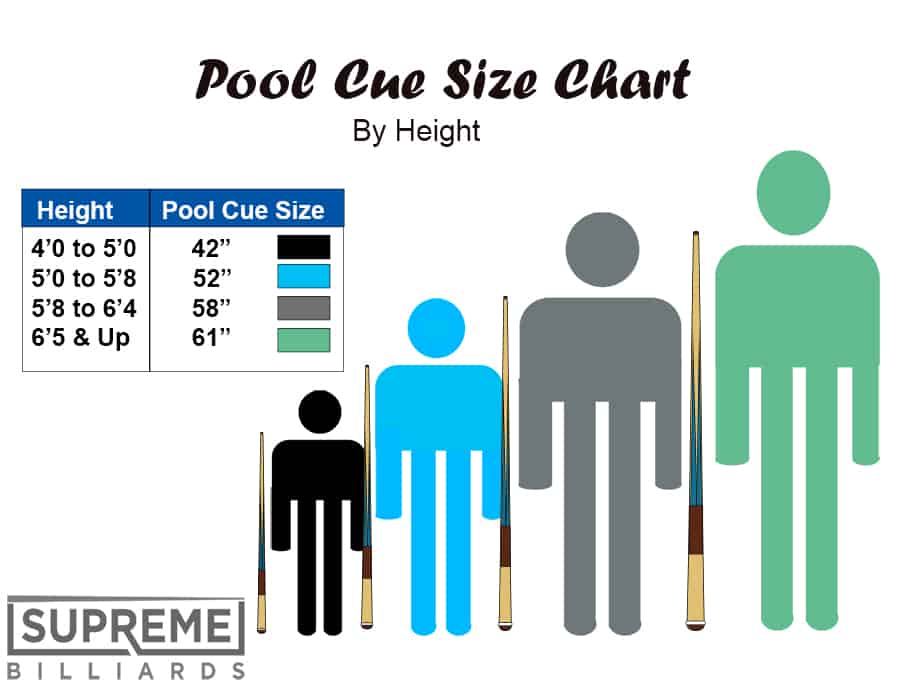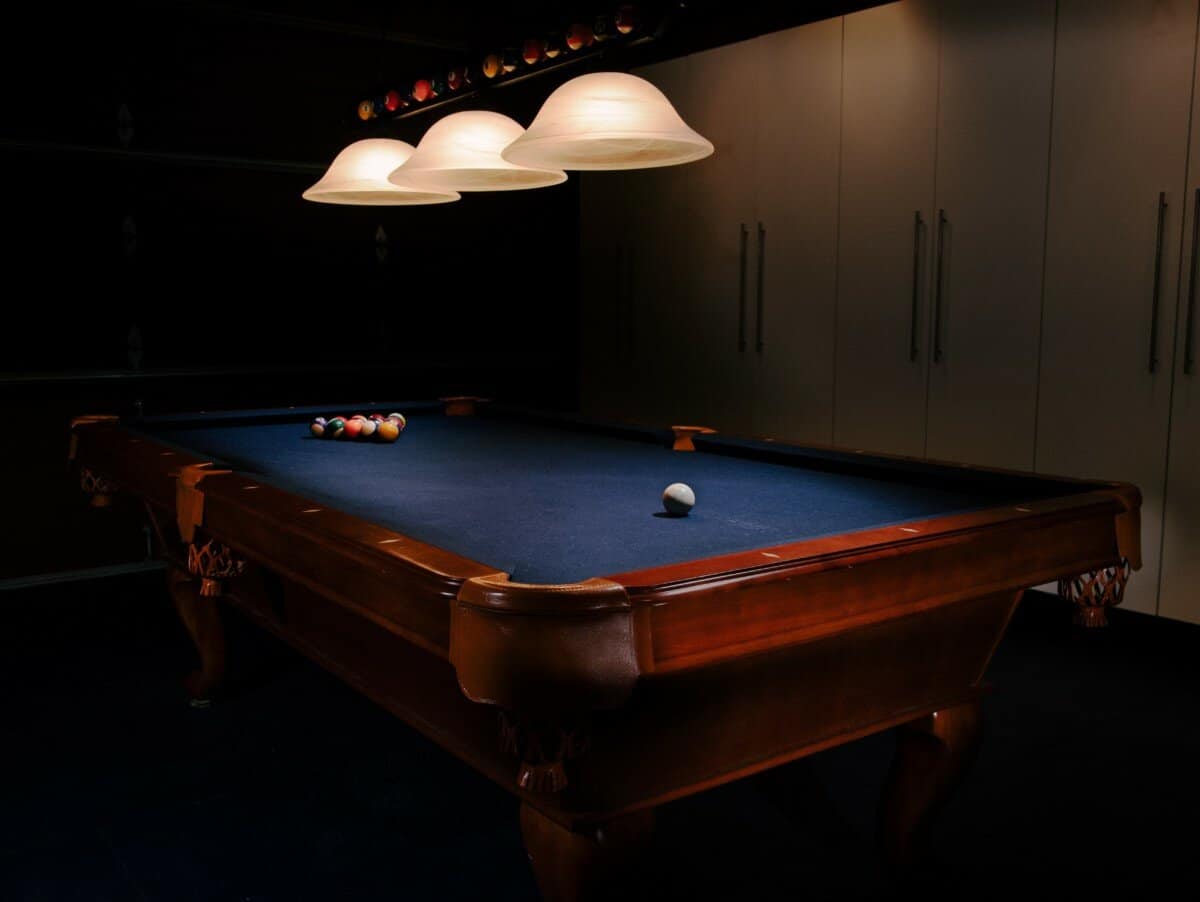Have you ever wondered if the pool stick you are using is too heavy or too light? Most people don’t even think of the weight. It’s more of an afterthought until you realize the weights are adjustable.
What weight should my pool cue be? Pool Sticks (or Pool Cues) are usually 19 or 20 ounces. This weight range will work for most people and “House cues” at bars or pool halls are generally a 19 ounce or 20 ounce in weight too.
Pool Cues can weigh from 17 ounces all the way up to 21 ounces. The different weights can affect several factors depending on if it’s lighter or heavier. The weight can also affect the players control over Side Spin (or English) and the effectiveness of a players break.
Pool Cue Weight
In the past, you may have noticed small numbers written on the butt sleeves, or handles, of house cues. Those numbers indicate the weight of the cue in ounces. Most pool halls offer cues between 18 and 21 ounces, while most pros will prefer either a 19, or 19.5-ounce cue.
But, what weight should your pool cue be? Well, that’s dependent on the individual and their preferences. However, most people’s starter cues weigh between 19- and 20-ounces.
Looking to buy a new pool cue soon? Check out my post about the best pool sticks under $100!
It is good to try multiple cues over several games (or weeks) to see which fits best to your physical ability. It is a perfectly acceptable to change later on; there is also a weight bolt that can be removed from the cue when needed.
Pro tip: lighter cues will cause the object ball to pocket slowly and the cue ball to be lively. The opposite is true for a heavier cue.
Pool, like any another sport, is about preparation. Much of the preparation put into pool happens before ever touching cue to felt. At the end of the day, when in doubt, pick a 19-oz. cue stick.
The Effects of Using a Heavier Cue
There is no one size fits all, and some people will find using a heavier cue suits them better. Depending on if you get a lighter or heavier cue, it will affect different things.
A heavier cue will have:
- A faster object ball
- A lethargic cue ball
But, why is that the case? The answer is relatively simple: Newton’s Second Law states that force equals mass x acceleration. A heavier cue will not create as great a force because less power can be created from the follow through (or, snap). Typically, your size also plays an important role in your cue’s length. The standard one-piece is 57 inches, and the two-piece is 58 inches.

There are also 61-inch cues for people above 6”4, 48-inch for people below the average height and 52-inch for children. In other words, much like your body size and the fixed cue weights, your body will eventually morph to fit the cue’s weight.
When in doubt, pick a 19-oz. cue. Once you develop a personal pool style and your technique matures, you may find a 19.5-oz is more to your liking. However, your options for weight vary anywhere between 14-oz to 27-oz in 0.5-inch increments.
The Disadvantages of Using a Heavier Cue
The cue’s speed and mass are directly correlated with the cue ball’s speed. In general, heavier cues will create greater cue ball speed but less control of direction after object ball contact. It has also been noted that heavier cues allow people to keep on line with their stroke.
A major pitfall to heavier cues is that there is less maximum tip offset shots from the center, as well as, less maximum spin. Also, the typical use of a heavier cue leads to double-hits, pushes, or miscues because the ball does not leave the tip fast enough.
The only shots that respond to weight are power shots; either an extreme power draw or the break shot. The added weight on an extreme power draw creates greater counter-friction upon the cues contact with the ball, which ultimately turns into backspin power that can make the length of a table.
The Effects of Using a Lighter Cue
Ultimately, as a player you are looking for comfort. An instrument of technique that should glide easily as an extension of yourself.
The cue’s speed and mass are directly correlated with the cue ball’s speed. It has also been noted that lighter cues allow people more freedom and can indirectly cause them to get off line with their stroke more frequently.
A lighter cue will have:
- A slower object ball
- An energetic cue ball
Some people are more comfortable with a lighter cue while others prefer a weightier feel. It will come down to a player’s adjustments to their stroke when searching for the optimal speed.
The Disadvantages of Using a Lighter Cue
I have been using a lighter pool cue (17 ounces) for the past 3 years. I love it because how much action and spin I get from my shots. It’s not perfect though and certainly comes with a few disadvantages I’ve had to learn to play around.
- It is much harder to control English or Side Spin with a lighter cue.
A player must really master cue ball control and the energy they put into each shot. This is a hard skill to master and can take many, many years.
Pool: The Baseball of Cue Sports
When thinking about cue weight, it is useful to compare the cue to a baseball bat. As you can tell from the above graph, there is an optimal bat weight but once at a certain level (around 35-oz) the effects of a bat’s weight matter less to a batted ball’s speed.
The same can be said for pool cues. When all is said and done, the difference in object ball speed between a 17-oz and 22-oz cue is minimal.
At the same stroke speed, there is only a 13% increase in power. By comparison, changing the leather tip on a regular to cue to the phenolic tip of a break cue increases the breaking power of a stroke by 17%.
Listen to any professional athlete out there. When practice turns to competition, comfort is the key determining factor for their equipment selection. The same holds true to cue sports.
Related Questions
What Weight Should My Break Cue Be?
When it comes to breaking, the heavier cue, maintained with a similar speed and accuracy, will break with greater power than the lighter. However, when it comes down to it, the speed of the cue ball, directly related to force in your arm, determines breaking power.
As a rule of thumb, pick within the standard range for a break cue weight (between 18- and 21-oz). What you are ultimately searching for in a break is power with accuracy as an important second.
Here, we begin to find that pool is not just a technical sport of physics but also one of physiology. The amount of fast-twitch and slow-twitch muscles in each person’s body vary so the cue weight will vary in accordance. In other words, athletic ability will influence cue weight. Thus, any cue weight will be personal and only found one way. I know I’m beginning to sound like a stuck record, but it’s key: practice and experimentation will morph your body to pool cues until the weight of a pool cue is only slightly important.
How Much Should I Spend on My First Cue?
Truthfully, the amount you spend on your first cue should measure to the commitment you put into pool. Ask yourself: what is the investment worth to you? Most beginners should look to buy a new cue at around $100 minimum. Think more along the lines of what it is you are looking for in a cue within your price range. Nonetheless, a good quality stick, i.e. one that will last a lifetime, will be in the $150 to $300 range. That being said, pool cues can easily reach into the thousand-dollar range.
How Should I Select My Pool Cue?
There are several factors, or rather components, to consider when selecting your pool cue. Besides the weight of the cue, consider its length, the wrap, the shaft, the shaft taper, the joint and the tip. Look for:
- a standard two-piece, 58-inch cue between 19-21 oz.
- wrap type (no wrap, Irish linen wrap, leather wrap)
- shaft diameter: 12 mm – 13 mm in 0.25 increments
- shaft taper: pro taper 10-inch – 15-inch (house cues are typically 8-in)
- joint pin: wood-to-wood, or metal joint collar
- tip: Moori (soft), Predator (medium), Kamui (hard)
A beginner should consider Irish linen wraps for their absorption, 13 mm tip with a medium density for spin control, 12-inch pro taper shafts for a firm feel and a wood-to-wood joint pin for maximum absorption and transfer of power. For an in-depth post, check out my article on 7 tips on choosing the perfect pool cue.

